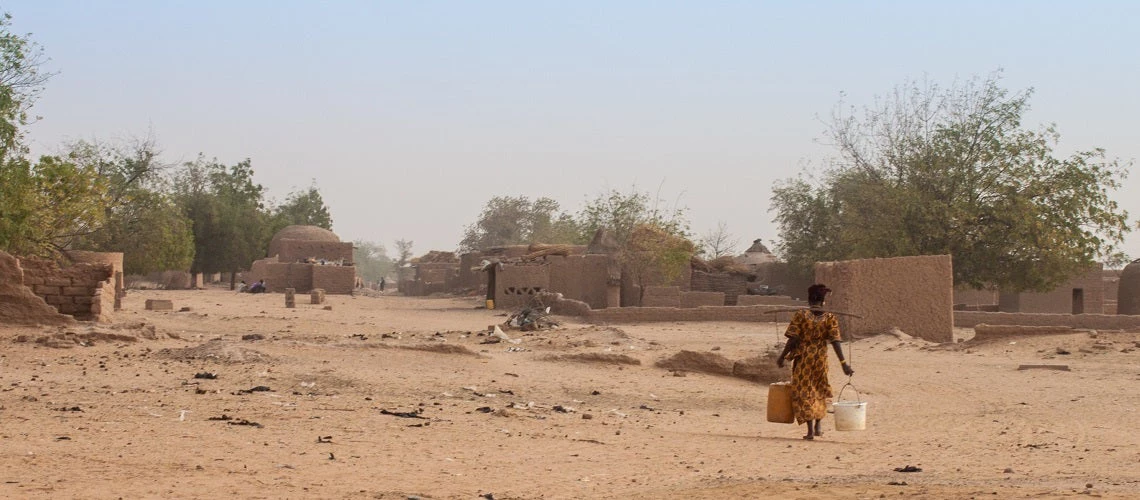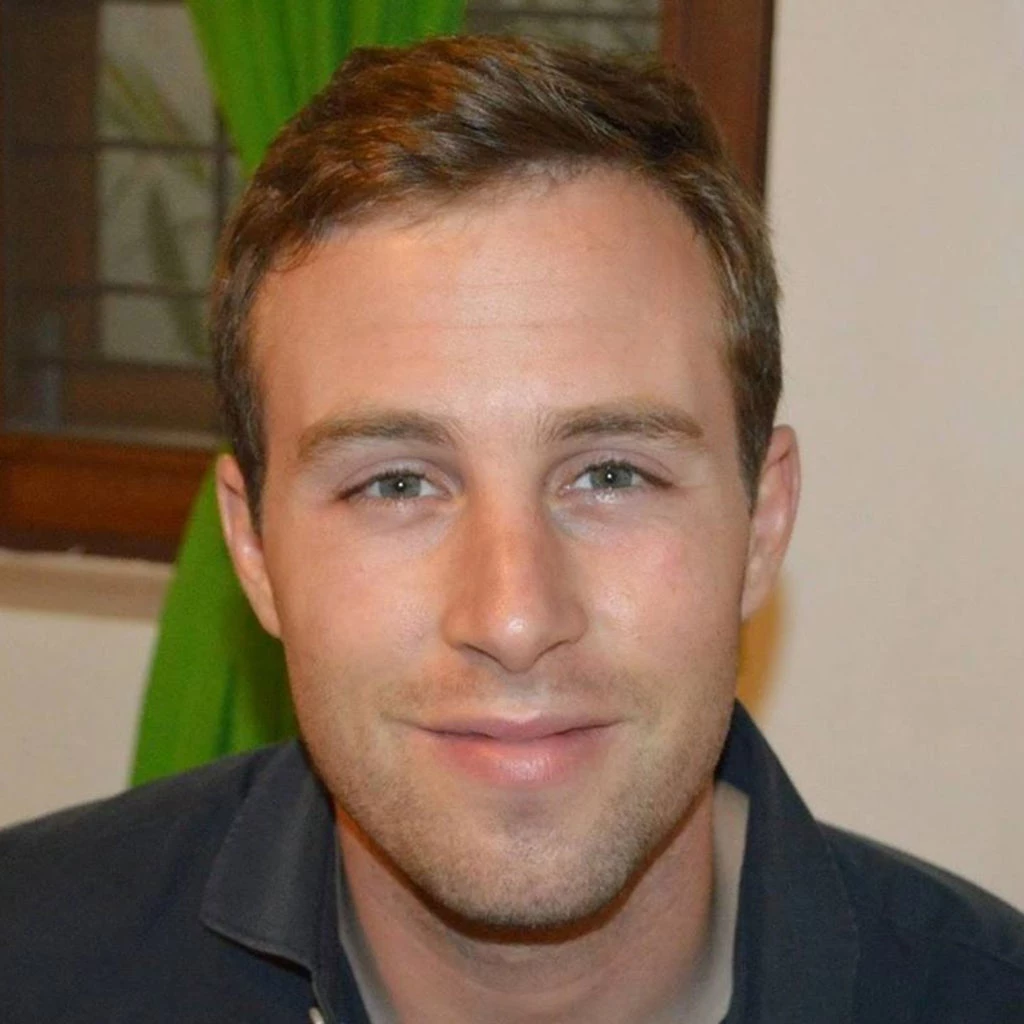 Recolección de agua en la aldea de Chagnassou en Níger
Recolección de agua en la aldea de Chagnassou en Níger
For decades, the number of active conflicts in the world steadily declined. But over the last 10 years, conflicts have tripled, particularly in the Middle East and Sub-Saharan Africa. This trend has coincided with the warmest decade on record and increasing drought conditions in these regions prompting researchers to explore whether a warming climate could be related to conflict.
Today, there is growing recognition that climate and conflict are linked. A 2015 meta-analysis found that a rise in local temperatures of half a degree Celsius is associated with a 10-20% increase in the risk of deadly conflict. Analyses building on this work suggest that certain areas of the world and populations are at higher risk, including agricultural societies that exhibit high levels of political exclusion.
In the Sahel region, an increase in droughts in recent decades has diminished the land’s productive capacity, forcing pastoralists to move their herds beyond the borders of their traditional homelands. This practice has resulted in violent clashes with farmers, who are also expanding land under cultivation to feed growing populations. A recent study found a 54% increase in the chance of conflict between farmers and herders in mixed-use areas for each degree Celsius in warming (compared to 17% in non-mixed areas).
"A 2015 meta-analysis found that a rise in local temperatures of half a degree Celsius is associated with a 10-20% increase in the risk of deadly conflict. "
To tackle this and similar problems, it is more critical than ever to reduce climate risk, while simultaneously addressing the underlying issues of social and economic exclusion that not only make certain groups more vulnerable to climate-related shocks and conflict but can, themselves, drive conflict.
4 key insights for innovation
The World Bank is advancing this agenda by improving understanding around climate-exacerbated conflict and addressing underlying factors such as social and economic exclusion. To this end, we are innovating on decades of experience with community-driven development (CDD) programs to help ensure that climate change mitigation and adaptation strategies account for the needs of all. Over $1 billion has already been invested in projects focused specifically on the climate-related drivers of FCV, including in the Lake Chad Region and along the Horn of Africa.
Four key insights from these and other projects offer models of what can work and a glimpse of potential avenues for innovation:
- Leverage technology to coordinate action and share information. By building links between local, national, and regional levels, a CDD approach can serve as a platform to reinforce the resilience of communities while strengthening regional coordination. This, for example, is the goal of the Lake Chad Regional Project, operating under the mantra of “think regionally and act locally.” ICT technology can be used to create two-way communication channels between communities, national governments, and regional organizations. For example, mobile applications can inform local planning with regional weather information, climate projections, and market prices to help farmers monitor local-level climate and FCV impacts. More broadly, improving the accessibility and transparency of analytics on climate change impacts and mitigation policy is especially crucial in contexts with social polarization and weak institutions where the distribution of costs and benefits pose real risks to social unrest and conflict.
- Creating space for dialogue around natural resource management. Bringing communities together around climate scenario-planning and the management of natural resources can serve a dual purpose. It can establish ‘rules of the game’ to create a more equal playing field for community members typically excluded from such fora, including women and youth. This more inclusive approach can help ease competition over natural resources–particularly access to and/or control over land, pasture, and water–that has emerged in recent World Bank analysis as key drivers of conflict in Kenya. Increasing local ownership of management strategies improves their chances of success and boosts biodiversity and water security.
- Leverage local knowledge. By channeling funds directly to communities and engaging them in decisions about how that money is spent, CDD projects put those closest to the challenges in charge of their solutions. The Guinea Support to Local Governance Project, for example, developed a tool to harness local knowledge on the most direct climate-FCV risks and integrate this feedback into multi-year planning cycles. Capturing this knowledge helps ensure that infrastructure investments are more resilient to disasters and enables people to exit conflict traps.
- Support diversified livelihoods and strengthen voice. Grants and training can help households diversify to off-farm livelihoods that are less sensitive to climate-related agricultural shocks but should be connected to local economic planning to ensure sustainability and scalability. Creating equal opportunities for all members of the community to participate in that planning can play a small but important role in addressing social exclusion, thus lowering conflict risks.
These entry points represent a first step in translating climate and FCV concerns into action. To advance this practical agenda, we will need more nuanced analytic foundations focused on actionable insights about which are the most salient risks, where the risks are highest, and how these risks come together to worsen FCV outcomes. But the most important question will remain: what do we do to address these risks to prevent climate-related conflicts from breaking out or worsening? In putting frontline communities at the center of our focus, and building partnerships across regions, the World Bank will be best placed to begin providing some answers.




Join the Conversation